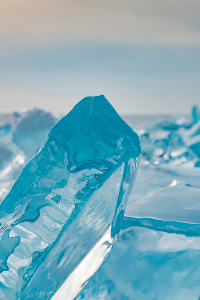Taxonomic Treasures: Reclassified Microbes and Glacial Discoveries
Posted on July 31, 2023 by Clare Baker
Each month, the Microbiology Society publishes the International Journal of Systematic and Evolutionary Microbiology, which details newly discovered species of bacteria, fungi and protists. Here are some of the new species that have been discovered and the places they've been found.
Shall we start off with an honourable mention? These first microbes feature in a reclassification study that gives new names to pre-existing microbes. Researchers reevaluated the taxonomic positions of Bacillus acidicola, Bacillus pervagus and the genera Heyndrickxia, Margalitia and Weizmannia. Results of DNA sequencing suggest Bacillus acidicola and Bacillus pervagus no longer belong in the same genus. They instead propose that Bacillus acidicola, and members of the genus Margalitia and Weizmannia, now belong to the genus Heyndrickxia (named by Gupta et al. in 2020 for Prof. Marc Heyndrickx’s (University of Gent) many contributions to microbiology and studies on Bacillus species). Bacillus pervagus has also been reclassified, and now belongs to a new genus, Oikeobacillus.
Now on to something that might be a little bit easier to get your head around – modified atmosphere packages of broiler meat. These are packages for poultry products containing gases to help preservation, in this case nitrogen and carbon dioxide. Scientists were researching the spoilage microbiomes of these packages when they came across two new microbes, Vagococcus proximus and Vagococcus intermedius. These novel species join the genus Vagococci which are found all over the place! They have been detected in humans as well as, seals, otters, martens, harbour porpoises, salmonid fish and snow finches. Several members of the genus have been reported harmful to their host; Vagococcus fluvialis and Vagococcus lutrae can cause nasty infections in humans. One member of the genus however, V. fluvialis, can actually protect their fish hosts from disease.

Next up we have three new microbes, all of which are found in humans. Firstly we have Holtiella tumoricola, isolated from a 73-year-old male patient’s biopsy tissue obtained through the British Columbia Cancer Agency Tumour Tissue Repository, Canada. Researchers were not looking for new microbes when they stumbled upon H. tumoricola, they were looking to understand more about the microbes associated with colorectal cancer. The novel genus name ‘Holtiella’ is in honour of Canadian Cancer biologist Robert Holt for his contributions to discovering the relationship between cancer and the gut microbiome.
The next new microbes to come from human samples are Allocoprobacillus halotolerans and Coprobacter tertius. These two novel bacterial species were isolated from the human gut during a Breast hEalth And Microbiota (BEAM) study at the Norwich and Norfolk University Hospital, UK. Much like the previous study, BEAM seeks further our understanding of the relationship between the gut microbiome and cancer.
It’s Barbie month so we have to include something pink in this month’s edition of ‘New to Science’, so let’s finish with one, shall we? Rhodococcus antarcticus is a pink-coloured, rod-shaped strain of bacteria isolated from Collins glacier, Antarctica. Researchers discovered this new microbe while studying the bacterial diversity of a till sample collected from the glacier.
